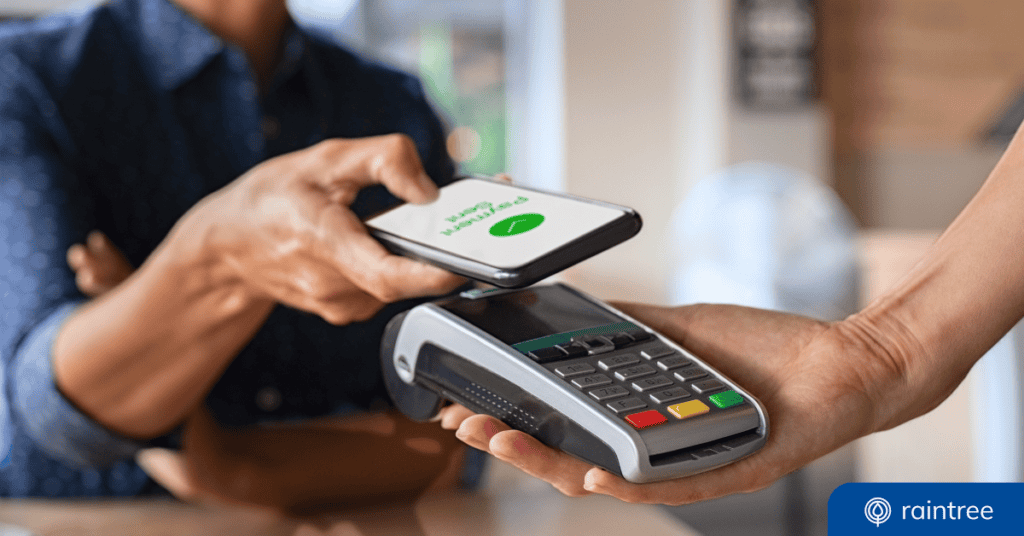
The landscape of healthcare payments is changing.
Patient cost-sharing has increased from about 10% to 30% since 2010. Practices are facing greater responsibility for managing patient payments, while also navigating staff shortages and lower insurance reimbursements. And as the commercial sphere continues to deliver more hyper-personalized customer experiences, the healthcare field is gradually following suit.
Today’s patients prefer, if not expect, flexible payment options that offer convenience, security, and ease of use. So let’s explore today’s most popular patient payment options—from HSAs to Google Pay—and find effective strategies to improve patient payment revenue at your practice!
Credit Cards: The Most Popular Payment Option
Credit and debit cards are the obvious winner when it comes to popularity. After all, 1.01 billion credit card (CC) transactions take place every day. As a payment solution for outpatient practices, credit and debit transactions can be initiated via mobile devices, patient portals, or in-person transactions.
Due to their widespread popularity, credit and debit cards are often the most convenient option for both patients and practices. Of course, practices should take note that credit card networks do come with processing fees, which may range from 1.5% – 3.5% per transaction.
Credit Card-on-File Payments
One way to streamline the patient payment experience is by using Credit Card-on-File (CCoF) payments. With CCoF, your practice can use stored payment information to complete authorized transactions, including automated recurring payment plans. A 2017 MGMA study found that authorizing CCoF for small balances (< $200) can help to reduce patient bad debt, time spent in Accounts Receivable, and the overall cost of patient collections.
A significant majority of patients (78%) embrace CCoF as a convenient and hassle-free payment solution.
In the rehabilitation therapy field, where patients may have appointments on multiple days per week, card-on-file authorization means that patients and staff can easily account for future payments.
💯 Practical Advice
Patient payment information must be stored securely. Any practice that accepts credit card payments or implements a CCoF policy should partner with a Payment Card Industry (PCI) compliant billing system.
ACH Payments: Direct and Secure
ACH payments are an increasingly popular option in healthcare. In fact, in 2021, the number of healthcare claim payments made via ACH increased by 17.9% compared to 2020, totaling 426.3 million.
What are ACH Payments?
ACH, or Automated Clearing House, is a network that transfers funds electronically between bank accounts. These transactions are called Electronic Fund Transfers (EFTs).
This payment method allows for seamless and efficient financial transactions between parties, as it eliminates the need for paper checks and physical payment processing. It’s similar to the experience of receiving paychecks via direct deposit, or paying rent via an eCheck.
The benefits speak for themselves. EFT payments are often cheaper to process compared to credit card payments, at an average of $0.26 – $0.50 per transaction. Additionally, ACH transactions are fast, highly secure, and federally protected.
Mobile Wallets: The Future of Flexible Payment Options
With the rise of telemedicine and the need for contactless transactions during the Covid-19 pandemic, mobile wallets (like Apple Pay and Google Pay) emerged to offer a convenient and secure way for patients to pay for their medical services. Since then, the adoption of mobile wallets has increased by nearly 30% annually.
Patient Preferences and Mobile Wallets
Mobile wallet payments aren’t as popular as credit card payments in the U.S.–yet. But a collaborative study between PYMNTS and Experian Health showed that 28% of patients would like to use mobile wallets to pay for their healthcare bills.
Despite this preference, only 8% of patients have reported being able to pay their providers for healthcare via mobile wallet. To truly improve patient satisfaction, practices should strive to identify and adopt consumer-friendly patient payment processes.
Another way that mobile wallets can create a better patient experience: Payment security. With tokenization, encryption, and biometric authentication methods, mobile wallet payments are secure options. As forms of payment like Apple Pay and Google Pay grow in popularity, more patients will become interested in using these digital methods when given the chance.
Health Savings Accounts and Flexible Spending Accounts
If your practice is seeking to cut costs and make the most of its finances, you can bet your patients are doing the same. Thankfully, there’s a digital payment option that helps with both! Health Savings Accounts (HSAs) and Flexible Spending Accounts (FSAs) are savings accounts that allow individuals to use pre-tax income to pay for qualified medical expenses, which may include deductibles, copays, and prescription costs.
Though there are a few differences between HSAs and FSAs, both are commonly provided alongside health insurance as an employment benefit, helping patients access medical care and save money. HSAs and FSAs can be an especially helpful option for those with high-deductible insurance plans, although research shows that these accounts may be underutilized.
Benefits of HSA and FSA Patient Payments
Providers benefit from accepting HSA and FSA payments because they provide a predictable income source and reduce the administrative burden of patient billing and collections. In addition to creating tax savings, HSAs and FSAs encourage patients to be more mindful of their healthcare spending, which can reduce the risk of medical debt and nurture greater proactivity in individual health.
There are multiple options for patients when it comes to making HSA and FSA payments. First, patients can use a debit card that’s linked to their account. These are usually provided by default or available by request. Second, patients can pay out-of-pocket with their preferred payment method, then submit their superbill for reimbursement from the account.
In either case, using FSA or HSA funds can be a win-win, effectively making it easier for patients to pay for their healthcare expenses.
Read the eBook:
The Impact of Customer Experience on Practice Revenue

Using Patient Portals for a Convenient Payment Experience
Patient portals have transformed the way patients interact with healthcare providers, allowing for easy access to medical records and enabling secure two-way communication between patients and practices.
Beyond this, easily-accessible portals can empower patients in managing their healthcare finances. Patients can use portals to navigate the entire payment journey: paying balances, tracking expenses related to treatment, and even checking on insurance coverage. The flexibility of being able to pay any time, anywhere is especially crucial for patients who lead busy lives or live in remote areas.
Benefits of HSA and FSA Patient Payments
Patients prefer online bill pay and are willing to take an active role in billing, but the majority of providers can’t meet them halfway! According to a 2021 report, 67% of patients want to use “digital and electronic payment options, such as receiving eStatements and paying online.” So why do 78% of providers “primarily collect from patients with paper and manual processes,” via mail or in-person paperwork?
If your practice is stuck in the dark ages–using paper statements or requiring patients to come in for every transaction–you’re missing the mark.
By providing the option to pay directly in the patient portal, your practice can create a more comprehensive and seamless digital patient engagement experience. After all, 46% of patients also “prefer electronic communications for medical bills, including emails, text messages, in-app messages, and live chats.”
Point-of-Service Collections
Point-of-service (POS) collections have become an essential tool for improving both the financial stability of healthcare practices and patient satisfaction.
Point-of-service collections refers to the system of collecting payment from patients at the time of service and point of care. For outpatient therapy practices, for example, payment information should be collected during patient intake. Patient intake kiosks can also improve the efficiency of this workflow!
On the patients’ side, POS collections can create a more satisfying experience and increase patient loyalty. Ultimately, patients want transparency about their financial responsibility before their appointments so they can make informed decisions. Patients who feel deceived or surprised by a medical bill are more likely to switch providers or even drop out of care entirely.
Collecting Patient Payments Up Front
Practices can create a smooth payment collection process by proactively communicating their financial policies, thoroughly training staff, conducting insurance prior authorization and eligibility checks, and delivering accurate estimates of cost.
Though it may require some adjustments in the short term, implementing POS collections can create a strong and predictable revenue cycle. Collecting payment up-front also reduces the administrative burden of collecting patient balances after the service has been provided.
Raintree Payments: Integrated, Simplified, and Secure
By embracing modern payment methods like these, practices can provide better quality care while keeping up with shifting industry expectations and standards surrounding patient payments. And we can help.
Raintree Payments is a PCI-compliant, all-in-one payment processing solution that supports credit card and ACH payments via pin pad, kiosk, patient portal, and CCoF. Our technology even grants you the ability to accept modern, patient friendly payment types (i.e. Apple Pay and Google Pay).
Raintree Payments is a superpowered, seamless addition to our industry-leading RCM and billing systems. When unified with our single-source EMR for Therapy and Rehab practices, Raintree Payments can even eliminate the tedious manual entry of transferring patient information from one system to another.
Don’t waste another second–or another penny! Revolutionize your billing with Raintree Payments.